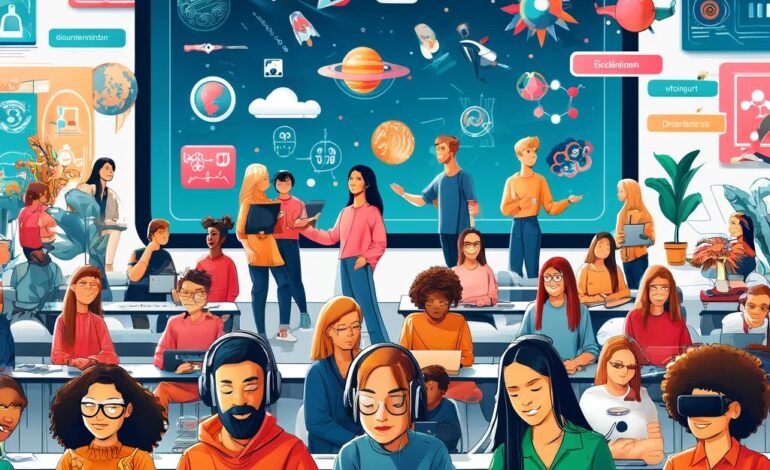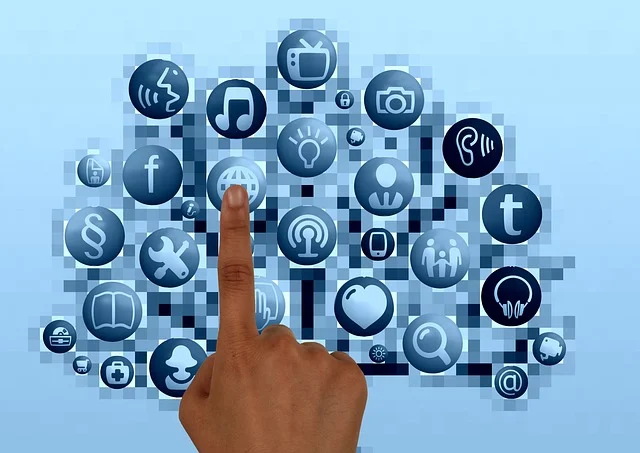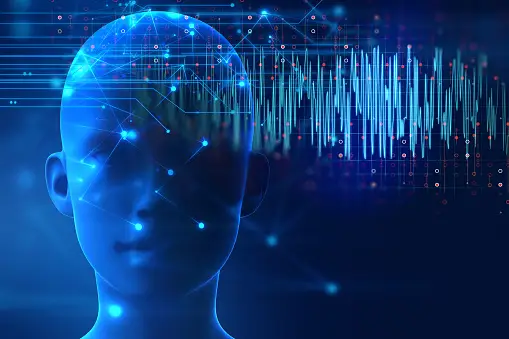Voice Cloning: The New Frontier in Artificial Intelligence

Definition and Overview
Voice cloning is a generation that entails growing a virtual simulation of a person’s voice. This AI-driven approach uses a device gaining knowledge of fashions to analyze the sound, intonation, and speech styles of a specific voice after which generates new audio clips that mimic this voice. With advancements in AI, specifically deep learning, the accuracy and realism of cloned voices have considerably improved, allowing those artificial voices to be almost indistinguishable from the original.
Voice cloning generation is typically powered by tools which include speech synthesis and voice conversion systems. These structures use databases of recorded speech which might be then processed to generate speech that sounds just like the target voice. This capability is not only a technological wonder but also a basis for several programs across exceptional sectors, reshaping how we interact with machines and devour digital media.
Current Technologies and Methods
The technological backbone of voice cloning includes several methodologies, in general text-to-speech (TTS) systems, deep knowledge of algorithms, and voice conversion techniques. Text-to-speech structures convert written textual content into spoken words, whilst deep gaining knowledge of algorithms is used to capture the nuances of a human voice. Voice conversion strategies attention on changing one voice to every other without converting the content of the speech.
Recent trends include the usage of deep neural networks, which include Convolutional Neural Networks (CNNs) and Generative Adversarial Networks (GANs), which have substantially strengthened the excellent efficiency of voice cloning. These AI fashions analyze big datasets of human speech, and knowledge of numerous attributes consisting of accents, emotional inflections, and precise vocal characteristics. This studying technique allows for the creation of surprisingly correct and personalized voice clones.
Enhancing User Interfaces
Personalization of Digital Assistants
Voice cloning generation has enabled the personalization of virtual assistants, making them extra relatable and user-pleasant. Users can choose a selected voice for his or her assistant—be it a superstar voice, the voice of a cherished one, or even their own voice. This customized interplay notably complements consumer engagement. For example, a digital assistant can deliver reminders and messages in a voice that the person reveals as comforting or authoritative, depending on the context.
This degree of personalization extends past mere novelty; it integrates digital assistants extra deeply into humans’s everyday lives. As these AI structures grow to be more personalized, they could perform responsibilities in approaches that sense extra intuitive and human-like, fostering a deeper connection between the technology and the consumer.
Improving Accessibility
Voice cloning plays a vital role in enhancing accessibility, in particular for individuals with disabilities. For visually impaired customers, voice cloning can remodel textual content-based totally content material into audio formats in voices that are clean and easy to recognize. Similarly, for folks who face demanding situations in studying or comprehension, having content added in a familiar voice can appreciably enhance expertise and retention.
Accessibility blessings additionally make bigger to language translation and speech impairment solutions, wherein cloned voices may be used to provide actual-time translation offerings or as a conversation resource for individuals who can’t talk. These applications now not simplest make regular interactions extra accessible but also empower people by giving them more independence and improving their pleasant of life.
Applications in Media and Entertainment
Voice Cloning in Movies and Dubbing
In the movie industry, voice cloning gives innovative modifications, especially in dubbing. Traditionally, dubbing foreign movies entails the usage of distinct actors, which can occasionally result in a lack of authentic emotion or character portrayal. Voice cloning permits filmmakers to apply the authentic actors’ voices to speak more than one language, preserving the authenticity and emotional intensity of the authentic performances.
This technology also allows the introduction of posthumous documentaries and the inclusion of overdue actors in new projects, preserving their voices in a way that respects their legacy whilst attractive to modern audiences. As this technology matures, it is probable to grow to be a preferred device in global media manufacturing, bridging language barriers while preserving the authentic creative cause.
Use in Video Games and Virtual Realities
Voice cloning has tremendous implications for video games and virtual fact, offering builders the capability to create more dynamic and sundry voice interactions. Game characters will have more sensible and varied dialogues, adapting to player alternatives with more fluidity and depth. In digital reality environments, cloned voices can decorate the immersive experience, making the interaction experience more reasonable and responsive.
Moreover, this generation permits adaptive and responsive storytelling, where characters can react in actual time to participant inputs in a manner that feels natural and engaging. This not only enhances the gameplay enjoyment but also opens up new possibilities for narrative complexity in interactive leisure.
Educational Advancements
Customized Learning Experiences
Voice cloning can tailor educational content material to match men’s or women’s mastering alternatives, offering a greater customized instructional enjoyment. By the use of cloned voices of educators that scholars feel comfortable with, or maybe peer voices, the mastering environment can emerge as greater attractive and effective. This customization can be particularly beneficial in online getting-to-know structures, in which academic content may be added in a multitude of voices to shape specific learning styles and desires.
Such technologies also allow for the scaling of personalized education without the consistent bodily presence of teachers, making training extra accessible and inclusive. Students from different areas can acquire education in their native languages or dialects, which can help bridge academic gaps and foster a greater inclusive worldwide schooling machine.
Language Learning Tools
Voice cloning is revolutionizing language gaining knowledge by allowing beginners to pay attention and practice new languages in numerous voices and accents. This exposure can drastically enhance pronunciation and listening abilities. Moreover, learners can interact with AI tutors who use voice cloning to offer comments in a conversational way, simulating actual-lifestyles interactions.
The capability to clone voices with one-of-a-kind accents and intonations is additionally a way that language learning tools can prepare newbies for the nuances and diversity of a language as spoken in one-of-a-kind regions. This makes the mastering process not simplest greater comprehensive but additionally, greater enticing, as college students can engage with a digital teacher who reacts and adapts to their specific getting-to-know tempo and fashion.
Security Verification Systems
The voice cloning era is being incorporated into safety structures as a method of biometric verification. Systems that recognize cloned voices may be used to affirm identities during secure logins, in customer support interactions, and in various authentication procedures. This adds an extra layer of security considering that voice biometrics can be tough to replicate as it should be without access to the particular generation and voice samples.
However, because the technology has turned extra big, it additionally raises worries about its ability to be misused. Ensuring that these structures are sturdy in opposition to spoofing assaults and unauthorized voice cloning is a key task for builders.
Challenges and Risks in Security
As voice cloning technology advances, it presents new demanding situations and risks in safety contexts. One of the primary issues is the capacity for voice spoofing, in which malicious entities may want to clone someone’s voice to benefit from unauthorized access to personal or sensitive records. This threat is mainly acute in sectors like banking and private security, in which voice authentication is used to get entry to money owed or secure regions.
To fight those risks, builders and safety experts are working on countermeasures inclusive of voice biometric systems which could come across subtle variations between an actual human voice and its artificial clone. These systems regularly incorporate layers of protection such as behavioral and contextual evaluation to ensure that the voice being used is certainly actual and not a synthetic impersonation.
Additionally, the prison and regulatory frameworks around the use of voice cloning in protection packages are still developing. Governments and companies need to set up clean pointers and requirements to save misuse at the same time as making sure privacy and consent are reputable.
Ethical and Privacy Concerns
Consent and Ownership Issues
The voice cloning era raises massive moral questions regarding consent and ownership. The capability to clone a voice doubtlessly lets anybody breed any other character’s voice without their permission, which could result in numerous moral dilemmas. For instance, do celebrities have the right to control how their cloned voices are used commercially? What are the consequences for non-public privateness if each person’s voice can be cloned from publicly available audio?
These issues necessitate clean criminal hints about voice cloning. It’s crucial that people have control over the use of their voice, including the ability to present or withdraw consent for its cloning and use. Legislation may want to evolve to protect individuals from unauthorized use of their voices, making sure that voice cloning generation is utilized in a manner that respects men’s or women’s rights and privateness.
Potential for Misuse and Regulation Needs
The potential for misuse of voice cloning generation is a chief moral problem. This consists of eventualities which include growing fraudulent audio recordings of someone agreeing to phrases they did no longer surely accept or impersonating others for crook purposes. The ease with which voices may be cloned and disseminated poses a considerable task for regulation and enforcement.
Regulatory frameworks want to cope with those issues head-on, with growing requirements that ensure transparency and responsibility in the use of voice cloning technologies. This consists of growing systems for tracking the use of cloned voices, as well as consequences for misuse. Regulation has to additionally inspire the improvement of technologies that can come across cloned voices, supporting to save you their unauthorized use.
Future Prospects and Challenges
Technological Advancements Required
The destiny of the voice cloning era relies heavily on continued improvements in AI and gadgets getting to know. Improvements in knowledge and replicating the subtleties of human emotion and inflection in speech are important to decorate the realism and software of cloned voices. Research into unsupervised getting-to-know models that may adapt to new voices with minimum input statistics can also extend the accessibility and performance of voice cloning technology.
Moreover, as the demand for personalized and interactive AI continues to grow, the capacity to generate high-quality cloned voices fast and fee-efficaciously becomes increasingly essential. This requires not simplest technological innovation but also, infrastructure development to support large-scale processing and garage of voice data.
Societal Impacts and Acceptance
The societal effect of voice cloning technology is profound, affecting the whole thing from personal privateness to media intake. Public recognition will possibly hinge on how these technologies are brought and controlled. Transparency in how voices are cloned and used, coupled with strong security features, can assist mitigate public issues.
Furthermore, the potential cultural impact of voice cloning, inclusive of its use in retaining languages or bringing ancient figures to lifestyles in instructional contexts, adds some other layer to its societal attractiveness. As those technologies become greater embedded in ordinary existence, ongoing dialogue between technologists, ethicists, policymakers, and the public could be vital to make certain they are used responsibly and beneficially.
Conclusion
Voice cloning is rapidly advancing AI technology with the potential to revolutionize interactions between humans and machines, offering more personalized and engaging experiences across various sectors like media, education, and security. Its ability to replicate human voices with high accuracy enables innovations that enhance both accessibility and user engagement. However, as this technology continues to develop, it brings significant ethical and privacy challenges that need addressing. These include issues around consent and the potential for misuse. Ensuring responsible use through robust regulatory frameworks and ethical guidelines is essential. The future success of voice cloning will hinge on achieving a balance between harnessing its benefits and mitigating associated risks, making it crucial for ongoing dialogue and innovation in this field.














